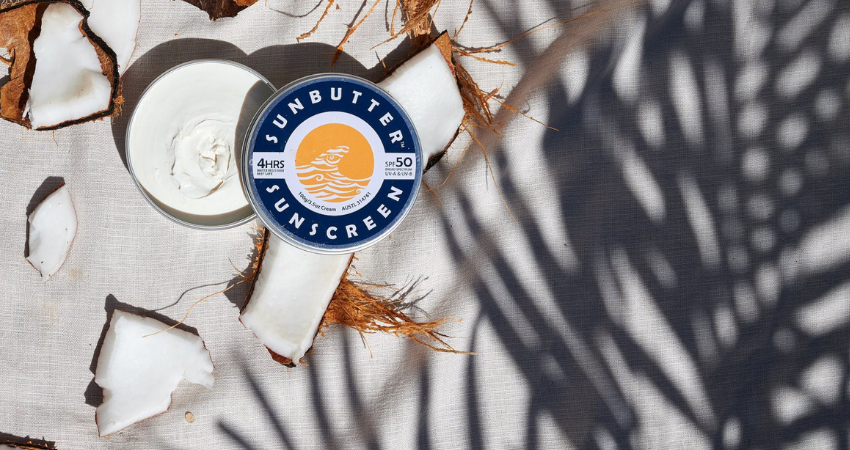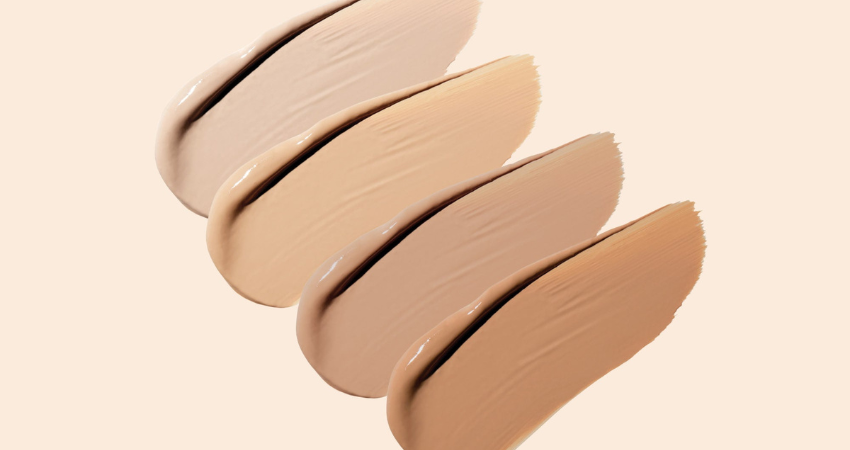There are so many sunscreens on the market that it's hard to know which one is right for you. This guide will help you understand the different kinds of sunscreens and how they work, plus give you tips on how to choose the best sunscreen for your skin type and lifestyle.
When choosing a sunscreen, the most important thing to consider is the SPF (Sun Protection Factor). The SPF number tells you how much protection from UVB rays a sunscreen provides. For example, if you normally burn in 10 minutes without any protection and apply a product with an SPF of 15, it means that it will take 15 times longer or 150 minutes (2 hours and 30 minutes) for your skin to start burning under strong sunlight.
If you're going to be outside for more than 2 hours at a time or live in an area with intense sunlight, look for an SPF that's higher than 30 - no lower than 50 though, although the difference between an SPF 30 and 50 isn't significant enough.
The highest SPF for sunscreen available in Australia is SPF50+. The SPF number is only a guide to a sunscreen’s protection. According to Cancer Council, in laboratory conditions, when used as directed, sunscreen SPF30 filters 96.7% of UV radiation and sunscreen SPF50 filters 98%. Both provide excellent protection if they are applied properly.
Another thing to consider is the UVA protection. The UVA rating on a sunscreen tells you how well it protects against the long term effects of UV light, such as skin cancer or sunburns. Australia has some of the highest levels of UV radiation in the world – in fact, UV radiation is strong enough to cause sunburn in as little as 11 minutes on a fine summer day, according to Cancer Australia.
The general rule is to apply enough sunscreen to cover all exposed skin. When applying sunscreen, you need at least one teaspoon per limb, one for the front of the body, one for the back and one for the head. A full body application for an adult should be at least 35 ml or seven teaspoons.
Sunscreen should be applied 20 minutes before going outside, and reapplied every two hours after sweating or swimming. Sunscreen should be reapplied after towel drying as well.
Cancer Council recommends using sunscreen every day on days when the UV Index is forecast to be 3 or above. Sunscreen should be incorporated into your daily morning routine on these days.
If you are planning on spending most of your day indoors, you may opt for a moisturiser with SPF, which will still cover you during commuting to work etc. However, if you are planning on spending most of your time outdoors, then sunscreen for face is essential to prevent you from burning and exposure to harmful UV rays.

Physical (also referred to as mineral) sunscreens are generally considered safer than chemical ones because they don't penetrate into your skin like chemical sunscreens do. They're also less likely to cause allergic reactions than some other types of sunscreen. The main downside is that they tend to leave a white cast on darker skin tones. They act as a physical blocker against the sun and UV rays. They usually have zinc oxide or titanium dioxide or both, and they sit on top of the skin, blocking UV rays from touching or harming your skin.
If you have sensitive skin or are prone to allergies, physical sunscreens may be the best option for you. Chemical sunscreens can cause irritation and breakouts in some people. They're also great for kids and babies, who may be more prone to allergic reactions from chemical sunscreens than adults.
They're also good for people who don't want to use products that contain chemicals like oxybenzone, octinoxate, avobenzone (also known as Parsol 1789), homosalate, octisalate, octocrylene, 4-methylbenzylidene camphor (also known as 4-MBC), PABA compounds (para amino benzoic acid), benzophenones like oxybenzone (also known as benzophenone 3)
Also, in most cases physical sunscreens (due to containing no chemicals) are also better for the environment.
If you're planning on spending time at the pool or beach, it's a good idea to look for a water resistant sunscreen. These sunscreens will keep working while you're swimming, and they can last up to 2 hours in the water.
Water resistant sunscreens are also great if you do other outdoor activities that involve being sweaty (like biking). They'll keep your skin protected from damaging UV rays during long days of fun outside - whether that means running errands or hiking.
If you like to swim with turtles and coral reefs or just want to do your part for the environment by not polluting our oceans, then we recommend choosing reef friendly sunscreen made with non toxic ingredients like zinc oxide and titanium dioxide instead of chemical ones like oxybenzone or avobenzone (also known as butyl methoxydibenzoylmethane).
Sunscreen, as defined by the FDA, is a “chemical that absorbs UV rays and prevents them from reaching your skin.” Sunblock is a matter of interpretation; it’s technically anything that protects you from sunburn.
When it comes to protecting yourself from the sun, many people think that sunscreen and sunblock are basically interchangeable. But they're not! And knowing the difference between these two types of products can help you prevent skin damage, wrinkles, and even skin cancer.
Sunscreens are designed to absorb UV rays before they penetrate your skin. They contain active ingredients like oxybenzone, avobenzone, octocrylene, and octyl methoxycinnamate. These ingredients work by absorbing the ultraviolet light before it reaches the deeper layers of your skin. The absorbed UV energy produces free radicals that can cause damage to DNA and accelerate the aging process of your skin.
Sunblocks are designed to reflect or scatter UV rays so they don't reach your skin at all. They contain ingredients like zinc oxide or titanium dioxide that reflect or scatter light away from your body to give added protection against UVA rays.
In the case of natural or mineral sunscreens, they act more as a sunblock as they are made with zinc oxide or titanium dioxide that sit on top of your skin and reflect UVA/UVB light away from it (not absorb it).
For dry skin, the key is to use a moisturiser before applying sunscreen. If you don't have time to wait until the moisturizer sinks in before putting on your sunscreen (which can take up to 30 minutes), then make sure that you apply it right after your morning shower or bath when your face is still damp from washing.
If you can't get enough moisture from just using a regular lotion, we recommend looking for sunscreens that contain ingredients like hyaluronic acid and glycerin. These ingredients help attract moisture from deep within the skin's surface by acting as "sponges" for water molecules that pass through their pores (also known as “humectants”). Ideally, these should be used alongside a lightweight oil free sunscreen moisturiser with SPF protection.
If you have eczema, it's especially important to treat your skin with care. Keep in mind that the most effective sunscreens are those with zinc oxide or titanium dioxide. We recommend trying sunscreens that have been dermatologically tested for sensitive skin, but it's important to patch test your skin prior to full application. If your skin is easily irritated, it may be essential to apply a moisturiser first prior to applying a physical sunscreen.
Natural sunscreens are always a better alternative to chemical based sunscreens when it comes to eczema prone skin, however is physical sunscreen natural? I don't believe that there is a 100% natural sunscreen that exist. Every sunscreen, even a natural one will always have a small chemical component in order to be effective against harmful UV rays, yet they are still a lot milder than the alternative chemical filled sunscreens.
Zinc oxide is a mineral that acts as a physical sunscreen - that is, it sits on top of your skin and reflects the sun's rays rather than absorbing them. Zinc oxide is non toxic and won't break down in the sun or water, so you don't have to worry about it washing off while you swim. It also stays on your skin longer than chemical sunscreens, which means you don't have to reapply as often when using products with zinc oxide.
This mineral is generally non irritating and safe for use on babies (and adults) and many of sunscreens are suitable for the entire family, including those with sensitive skin.
Many zinc based sunscreens tend to leave a white residue, although sunscreen with zinc sold by Sassy Organics are relative good and leave minimal or no white residue at all. Sunscreen stick with zinc from People4Ocean is our customer's favourite. It is water resistant, compact and great for extreme outdoor activities.

If a sunscreen is tinted, it can help with skin tone and redness as well. Tinted sunscreens may not be as effective as physical sunscreens (if they have a low SPF), so I would recommend using them in addition to one of the above options if you will be spending most of your time outside or in the water. If you just want some extra protection during your commute to work, it may be worth trying out a tinted sunscreen rather than applying a sunscreen or sunblock.
We hope this guide has helped you figure out what kind of sunscreen suits your needs. Remember that the best sunscreens are those with high SPF, water resistance and zinc oxide, as well as less harmful ingredients like titanium dioxide or avobenzone. If all else fails, look for tinted options that won't make your face pale white while protecting it from UV rays at the same time!
RECOMMENDED PRODUCTS